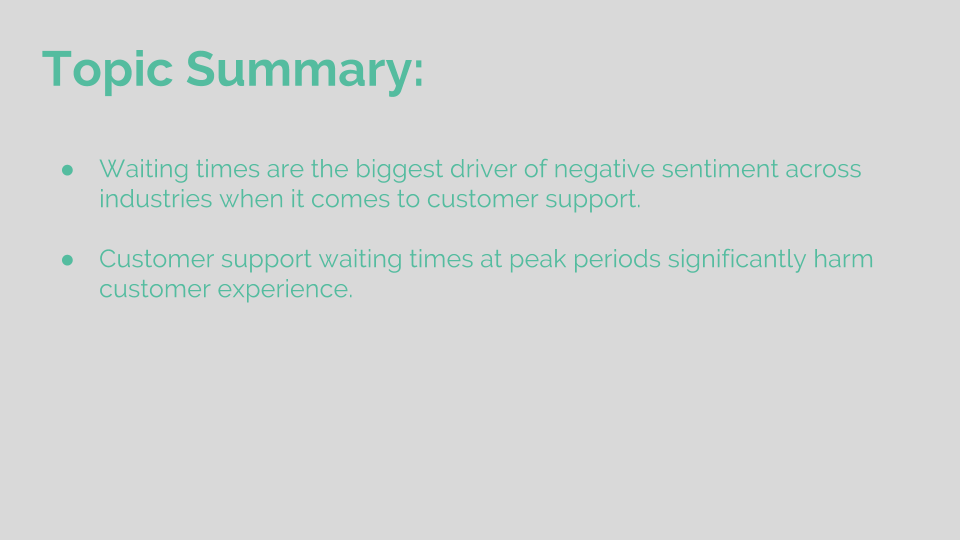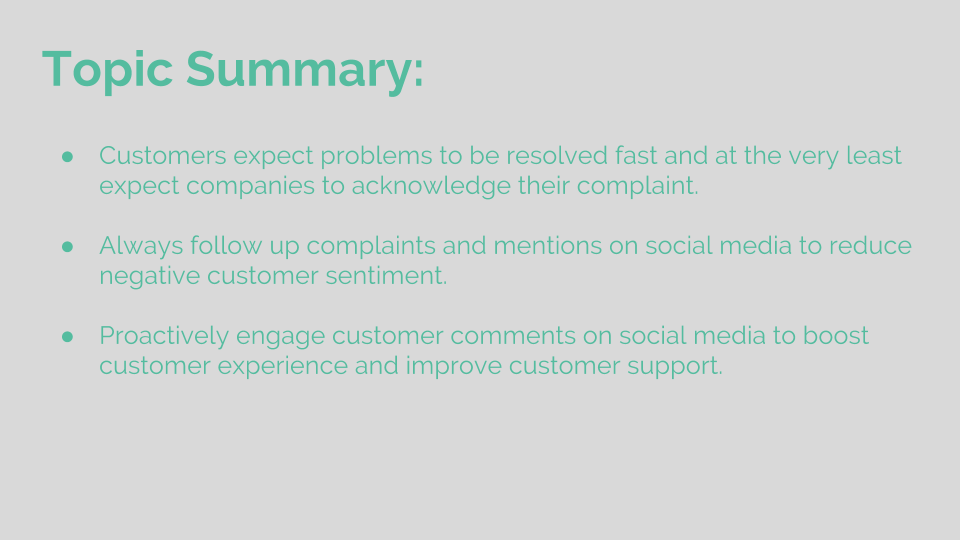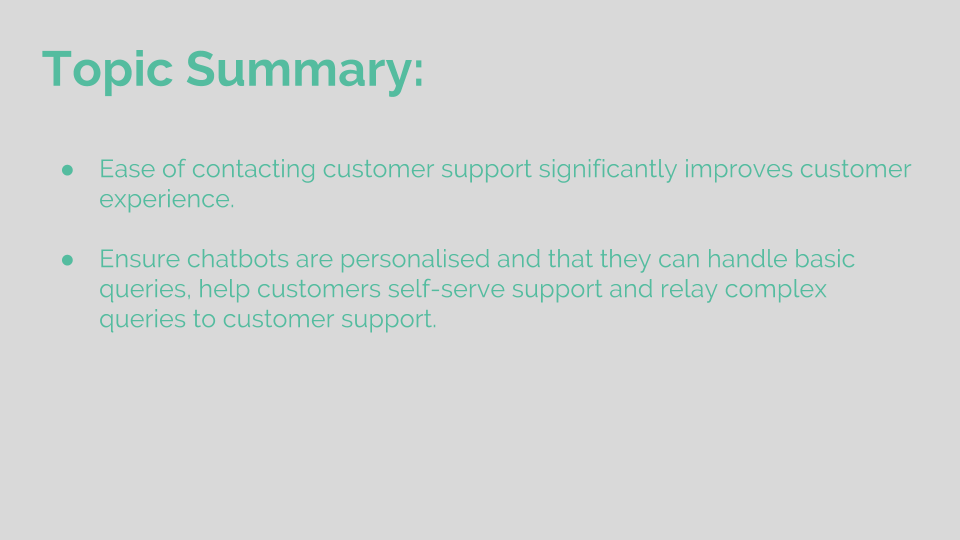Customer experience has become a business cliche – and for good reason. It drives performance of every single company, from startups to the FTSE 100. When we talk about customer experience, we mean the sum of all interactions a customer has with a company, including touchpoints before, during and after a sale. Done right, it is a source of competitive advantage and can contribute to stronger financial performance. Yet some of the biggest brands in the UK are failing their customers.
We studied customer feedback from some of the largest brands in the UK, using our text analytics artificial intelligence (AI) to identify and classify all mentions of topics related to customer care and support. As shown in our charts, just two fashion retailers, Farfetch and Missguided, and two banks, Monzo and Revolut, received net positive customer sentiment for customer support overall. Recurring themes among customers were waiting times, problem resolution and the provision of multi-channel support. Companies that offered the best support experience were primarily online retailers, however embraced both traditional and new channels for customer support.
Long waits frustrate customers
Customer support waiting times are one of the biggest gripes of consumers – the average consumer spends six and a half hours a year on hold to call centres – and are a large source of frustration amongst customers, particularly when things inevitably do go wrong from time to time. Unsurprisingly, wait times were one of the greatest drivers of negative sentiment across the feedback we analysed. Wait times and responsiveness were mentioned in 30.4% of all customer support comments for banks and 39.9% for fashion retailers, of which only 31% and 34% respectively were positive mentions.
During peak periods, for example following Christmas and New Year, the average net sentiment across all companies fell. This coincided with an increase in negative sentiment around wait and response times.

Customer expectations have progressed quickly
Technological change has enabled companies to engage with customers across more platforms than ever before. The best companies use these to strengthen relationships with their net promoters and act quickly to manage potential detractors when things go wrong. From customer sentiment, we identified quickly that customer expectations have progressed as fast as technology itself, with customers expecting swift resolution of issues in the smallest number of interactions. Where companies failed to meet the mark, sentiment toward the business was hurt.
Of the companies we analysed, all now offer some level of support through social media, yet this was amongst the worst channels for problem resolution, with customers frequently complaining about having to follow up on these interactions to reach an outcome. Meanwhile, some companies are proactively responding to both positive and negative mentions of their name on social media even if not necessarily been tagged by a user, generating positive sentiment in the reviews we analysed and building or strengthening customer relations.
Problem resolution was better where customers interacted with agents in real time, either by phone or live-chat. The four best performers, and every one of the banks we analysed, all offered multiple channels for customers to get in touch, including at least one ‘live’ option. This helped banks to keep negative sentiment to a minimum, as agents were mostly praised for being knowledgeable, even if waiting times were a source of frustration. Fashion retailers ASOS and Boohoo do not publicly offer customers a way to interact live with agents, which did not go unnoticed by customers, who mentioned this or long waits in over 60% of all negative comments and was a key factor in their negative overall net sentiment.

Live communication improves outcomes
Problem resolution was better where customers interacted with agents in real time, either by phone or live-chat. The four best performers, and every one of the banks we analysed, all offered multiple channels for customers to get in touch, including at least one ‘live’ option. This helped banks to keep negative sentiment to a minimum, as agents were mostly praised for being knowledgeable, even if waiting times were a source of frustration. Fashion retailers ASOS and Boohoo do not publicly offer customers a way to interact live with agents, which did not go unnoticed by customers, who mentioned this or long waits in over 60% of all negative comments and was a key factor in their negative overall net sentiment.
Companies offering live-chat features on their websites and apps universally scored more highly overall, with a much lower frequency of adverse comments regarding wait times. Barclays, Atom Bank, Revolut and Missguided, in particular, were highly praised by customers for their chat functionality. Lower wait times and speedy resolution meant that these services drove significant positive sentiment where offered. Live chats were not a silver bullet, however, and were poorly received by some bank customers critical of waiting to access agents or responsiveness to messages they sent using the service. These interactions contributed to negative sentiment but were outweighed by satisfied customers.
There was a mixed response to the integration of automated chatbots, at banks including Revolut, with these services. Some customers were pleased with the ability to ask quick questions and be directed to the right place, while others found them a frustrating barrier to accessing live support. Chatbots have been hailed as part of the future of customer service and certainly have a place in the arsenal of options for organisations looking to find new ways for customers to connect with them. Their potential to provide an intelligent automated or self-service style of customer support should enable organisations to better allocate the time of live agents to customers with complex needs.

Summary
Organisations that offer customers a wider choice of channels to access support, including live channels such as chat or access to a call centre, receive better feedback from customers and provide a superior support experience. In the best scoring organisations, customer frustration is minimised by keeping wait times low and by resolving problems at first point of contact. Companies are being proactive on social media and experimenting with technology that improves the support experience for customers. Those that fail to invest in, or understand, their support experience risk being left further behind as the most customer centric organisations take the lead.




Jack, interesting article, but isn’t it that not the wide choice of channels is the decisive factor but the right choice, in combination with the band width necessary to keep wait times low? While I agree that it is important to offer live chat or in-app messaging the challenge remains that if there is no one to deal with the incoming customer then there is even more dissatisfaction.
2 ct from Down Under
Thomas
@twieberneit